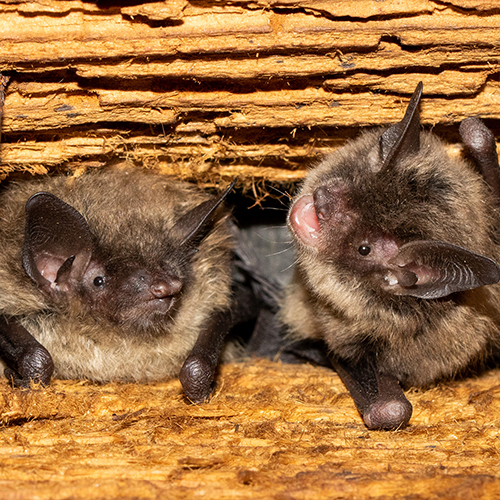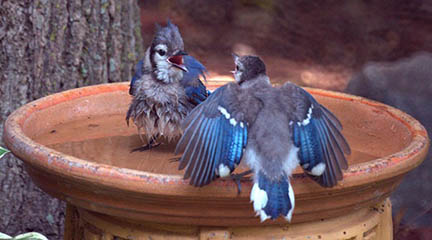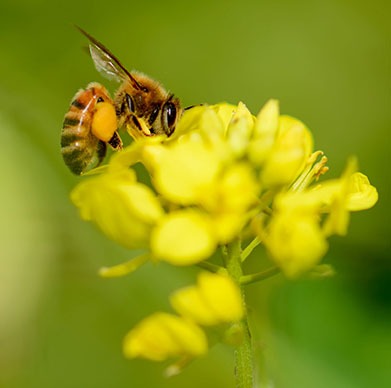
It is estimated that approximately 70% of bees native to the U.S. nest in the ground. Depending on the species, ground nesting bees may spend as much as 11 months underground developing from an egg into an adult bee. The adult bee may only be active above ground for a few weeks. During those few weeks, the female bee must dig a nest / tunnel, mate, lay her eggs, and provide food for her future young. After a few weeks, the adult dies and the process begins again as the new eggs begin developing underground. Many ground nesting bees emerge in early spring before the trees fully leaf out.
Ground nesting bees are typically solitary with each female digging her own tunnel in which to lay her eggs. Often a large number of tunnels can be packed into a relative small area which may give the appearance that the bees are more social than they really are. However, the closely packed tunnels are more similar to the living arrangements of people in apartment buildings or houses in a subdivision, than to those of a honey bee in a hive.
Providing habitat for ground nesting bees is relatively easy. Allow small patches of sunny, bare or sparsely vegetated ground to exist in your yard. If the areas are relatively sandy, even better. Don’t mulch or dig in these areas so you won’t disturb the tunnels. The tunnels of ground nesting bees range between a few inches to three feet deep depending on the species. If you already have ground nesting bees on your property, protect those areas and count yourself lucky. Ground nesting bees are important pollinators of many early blooming plants.

This article was part of Shannon’s original Kentucky Pollinators and Backyard Wildlife blog which evolved into the blog for Backyard Ecology.

Backyard Ecology: Exploring Nature in Your Backyard
Nature isn’t just “out there.” It’s all around us, including right outside our doors. Hi, my name is Shannon Trimboli, and I am the host of Backyard Ecology. I live in southcentral Kentucky and am a wildlife biologist, educator, author, beekeeper, and owner of a nursery specializing in plants for pollinators and wildlife conservation. I invite you to join me as we ignite our curiosity and natural wonder, explore our yards and communities, and improve our local pollinator and wildlife habitat. Learn more or subscribe to my email list at www.backyardecology.net.



